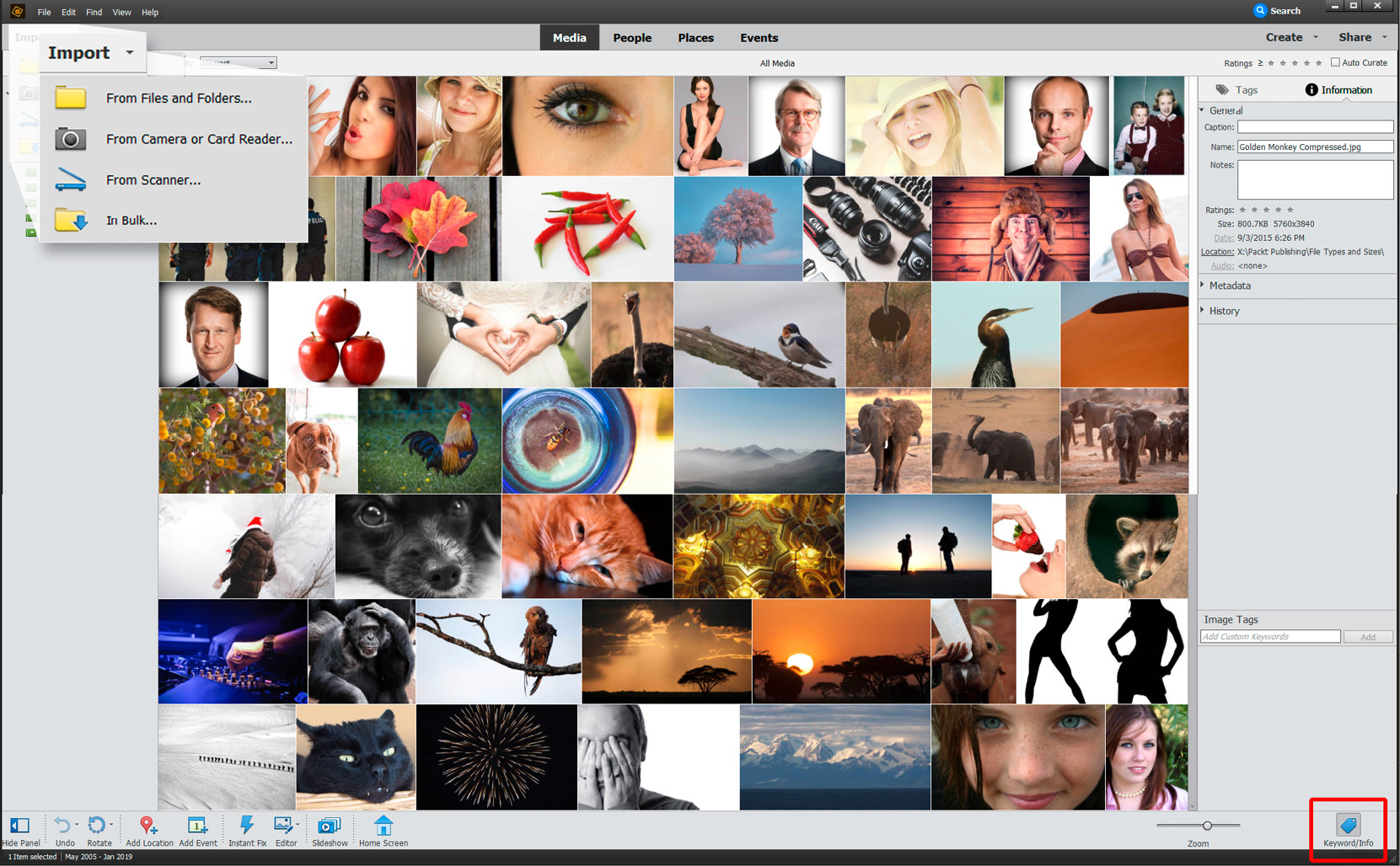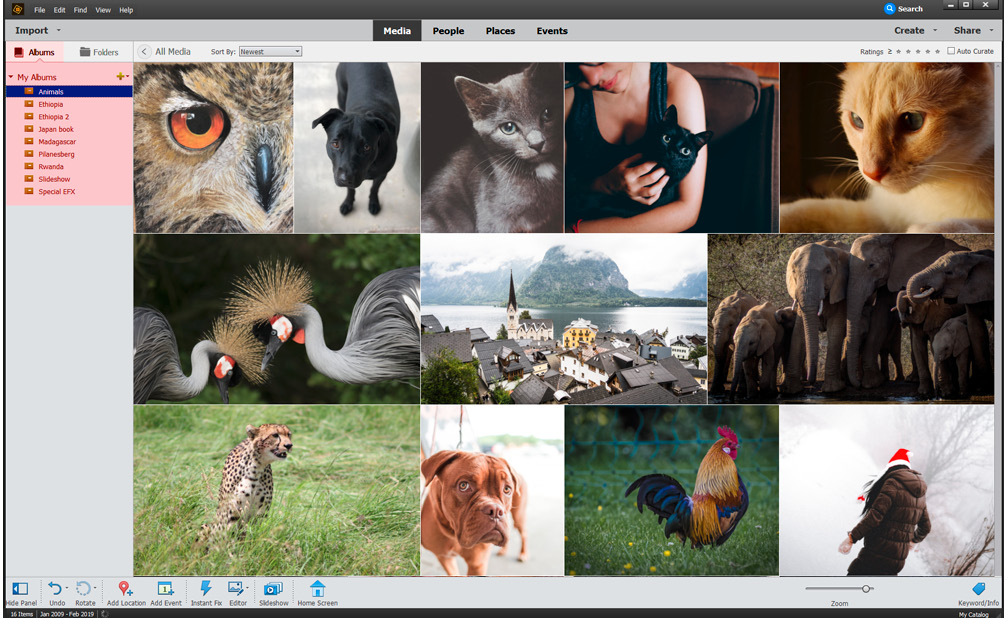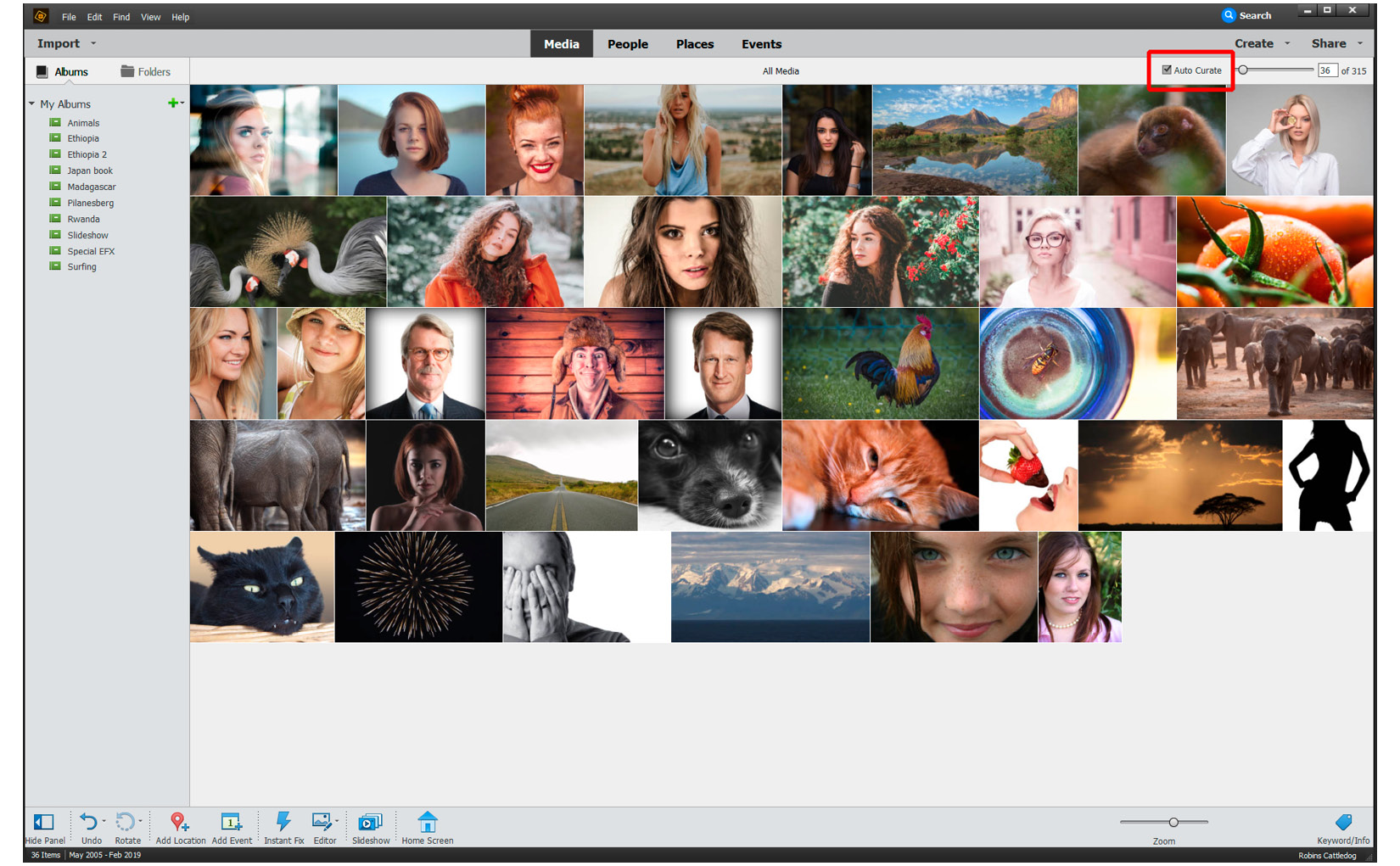Media backup
As we expand our image and media collection, we'll not only need large-capacity hard drives, but also backups. It's important to perform backups in case the original drive corrupts, or suffers a mechanical failure. Nothing is forever and even though the drive might be a premium brand, things can still go wrong, usually when you least expect it.
There's no point in backing up images, or your Elements Catalog, to the same place where everything else is stored—typically your computer's hard drive. If it becomes corrupted, everything will be lost. For this reason, it's important to consider buying a large-capacity hard drive, preferably one with a higher capacity than the computer's drive, which is then used only for backing up your data: images, music, Elements' Catalog, and so on. Most PCs have room for additional internal drives. If you use a Mac, you'd do best to buy an external hard drive.
If you are using a Mac, backing up your data is very easy using a pre-installed Apple application called Time Machine. Windows users also have it easy because most good quality external drives (such as Seagate and Western Digital) come with automated backup software included.
This software takes only a few moments to set up. Once done, you can forget it, because it automatically backs all your new material up every hour, day, or week (depending on how you initially set up its preferences).
The two screenshots here show Western Digital's free backup software (available for Mac and Windows) on the left, and Apple's excellent Time Machine software utility that comes pre-loaded on every Mac, on the right:
.jpg)
Let's move on and learn how to get our pictures into the Organizer so that we can begin the exacting process of image organization and then dive into some editing.
Importing photos and other media into Elements Organizer
As already mentioned, when images are imported into Elements Organizer, they are not really copied into the application at all; they are just linked from the place where they physically reside (typically, this is the Pictures folder) to the Organizer. This is so that if Elements develops some kind of technical issue and you have to delete and reinstall the application, you simply reinstate the catalog from the backup version, and it automatically relinks all missing files. Sometimes, it's necessary to actually point the program to the hard drive where the images are stored, but more often than not, Elements will search and find every image that was previously linked in the catalog. It's a very clever program.
Using the Import button (on the top left-hand side in the Organizer), you can bring images, audio, or video clips into Elements Organizer directly using the From Files and Folders option. These files can physically reside anywhere – locally, on the computer, or externally on a drive. There are also options to import files directly from a camera or a card reader, or in bulk from pre-organized folders. The panel on the right-hand side of the main window holds both Keyword and Metadata information about each file. Click the small Keyword/Info button on the lower right-hand side of the main screen to open/close this panel (highlighted in red):

Because of this linking process, it's not advisable to rename or move files that have already been imported into Elements. If files are moved or renamed using the Windows Explorer or Mac's Finder, the next time Elements is used, it will prompt you that the file is missing and immediately start a search for the file. This is fine if the name remains the same, but if it has a new name, it will have to be re-imported. You can leave Elements to complete the search, or do it yourself if you know where the file was moved to. How long Elements takes to locate a moved file depends on how big your photo collection is.
The import process is fast because, remember, Elements does not copy the full pixel data – it only takes small thumbnails and the metadata (essentially text) when it forms a link to the location of your original files. So, to avoid wasting time searching for files that have been renamed or moved after they were imported into the Organizer, it makes sense to sort out the storage hierarchy on the computer or external drives before importing into the application.
We all have different ways with which to organize our busy photographic lives. Some prefer to store files by date, while others prefer to name everything according to events in their lives. There is no right or wrong way to do this. The best method is the one that you are going to remember in months or years to come.
That said, there are basic rules I can suggest that will make the editing process flow better. Download and organize your files into pre-made folders as often as you can. There's no need to rename the actual files, but if you download from memory cards on a regular basis, it will help you keep abreast of the Elements import processes. Downloading frequently will also ensure that you don't accidentally overwrite files on a camera memory card that were not backed up. Always add keyword tags to freshly imported files. The longer you leave organizing your work, the more confusing it gets.
For example, I divide my images up into events. These might typically be work, trips, family, celebrations, weekends away, and so on. I create an album for each big trip, an album for a conference, an album for the kids' birthdays, and so on.
Some photographers prefer to file and search for images based solely on the date. I prefer to give everything a proper name and only search by date when nothing else works. We are all different, so it is important to consider your naming conventions before you start—it'll save you a lot of time later on.
As images come into Elements Organizer, they appear in the main window as thumbnails. You can make the thumbnails bigger or smaller using the zoom slider at the bottom right-hand side of the main screen. You can also use the edge-of-screen sliders to scroll down the page to see more thumbnails, or easier still, use the Up/Down keyboard arrows.
As a suggestion, before you import a second batch of images, it makes a lot of sense to sort out the first batch, because if you continue to import folder after folder of images, before long, you'll have thousands displayed in the main screen, and that can get very confusing. Once imported into the Organizer, you can see exactly where on your hard drives those imported files reside through the Folders menu in the left-hand bin.
Another best practice is to sort any new files into what Adobe calls Albums, which you make in the Organizer. These are essentially virtual folders that are used for compartmentalizing image files inside Photoshop Elements. Dragging image thumbnails to populate these albums doesn't alter the location of the originals. You can then apply keywords, tags, and star ratings, and even rank them according to the places and people that Elements identifies for you during the import process. I particularly like ranking images according to keywords and the star attribute hierarchy because they are easy to use. Use one or a combination of these filing systems to bring greater order to your image library. Everything can, of course, be renamed, copied, and moved while it's inside Elements.
In the following screenshot, I have created an album called Animals. Selecting the album on the left-hand side of the window will display the contents of that album in the main window. As with most features in Elements, an album can be renamed:

The huge advantage of creating albums, apart from enabling you to easily compartmentalize your work into smaller, more practical collections, is that you can have the same image or images in multiple albums without increasing the space taken up on the storage drive.
All the details of this filing system (albums, tags, keywords, thumbnails, original files, and so on) are part of the Elements catalog, which in itself is something that also needs to be backed up to a location that's different to where the original RAW files are backed up. Some photographers prefer to divide image collections up into multiple different catalogs. For example, wedding photographers might have a separate catalog for each client.
The main disadvantage of organizing your work this way is that you can only ever open one catalog at a time, which is why it works for wedding and portrait professionals – each client is entirely separate from the other. You might like to have two catalogs – one for work and one for the family – but most photographers use just the one.
Photoshop Elements has a number of quite powerful but often overlooked features – including this one, called Auto Curate, highlighted here in red, which picks the top 500 images from the Organizer. The results might surprise you:

With your media displayed in the main window, check the Auto Curate box and watch as Elements finds 50 of the best images from anything up to 20,000 images (according to Adobe). As I think most of the images in my test media are good anyway, it's a mystery how it finds 50 (or any number you choose) of the best. Nonetheless, this is worth a look for a quick, frustration-free selection.









































































